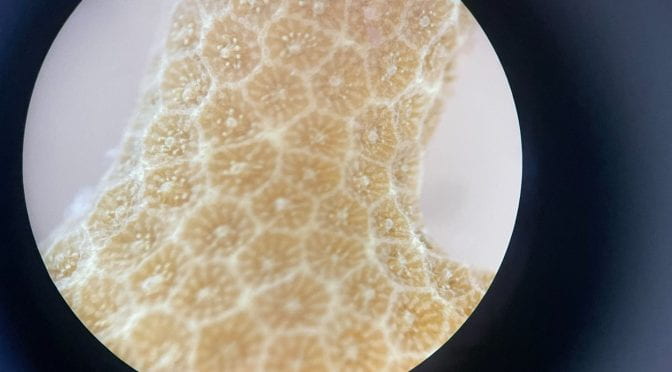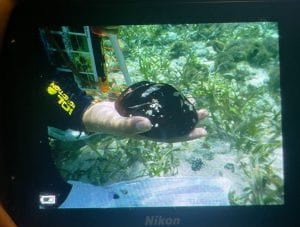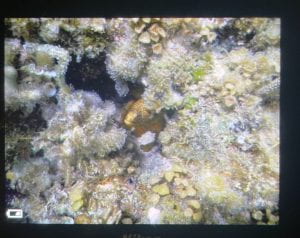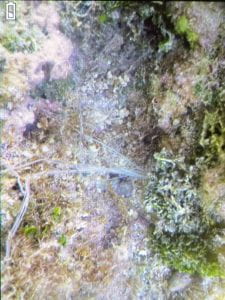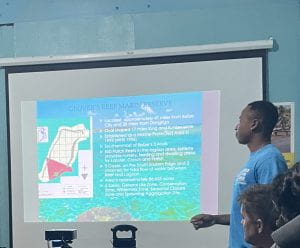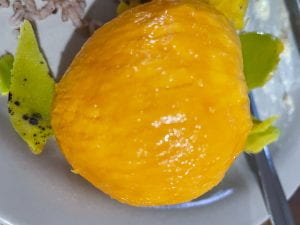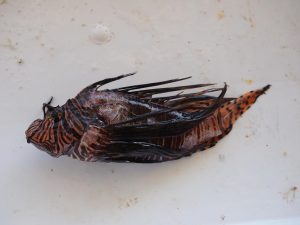Today was our first entirely land bound day, which though at first was disappointing ended up being a really nice change in pace.
We went out to the dock to pass a bit of time and spotted a young lemon shark swimming by. It was the first of many appearances for this little guy.
We then began our day by compiling our parrotfish data from the previous day and creating our third poster of the class discussing our findings.
Once we finished, we waded out by the dock and tried to see what we could find, catch, and collect from the surrounding areas. There were tons of small schools of fish, and the lemon shark kept circling by to try to catch them. We ended up catching three large hermit crabs and a red land crab, along with a baby crab, two snails, and five small fish.
In the afternoon we finally explored the rest of the island. Though it’s only a 20 minute slow stroll around, each part proved to be super interesting and unique.
First up was the coral graveyard, which was a beach made up of almost entirely fossilized corals. There were a ton of different species, including Montastraea cavernosa, or the great star coral, which has huge polyps, brain corals, and purple sea fans!
The waters were also filled with sea urchins and starfish, which felt really weird when they moved.
Further along the trail is a really nice sandy beach, where we spotted a small dead pufferfish.
We also saw tons and tons of sprouting coconuts!
After our hike we went back to the dock to yap and nap before presentations…
…and then again before dinner.
We ended the night back out on the dock, dangling a couple flashlights to attract fish. Initially we only attracted plankton, but soon we spotted and caught a ton of small fish, shrimp, glass eels, and even a squid!
Though we never made it to any reefs, today was a much needed and eventful rest day. Excited to get back out on the reefs though!
Ian C








